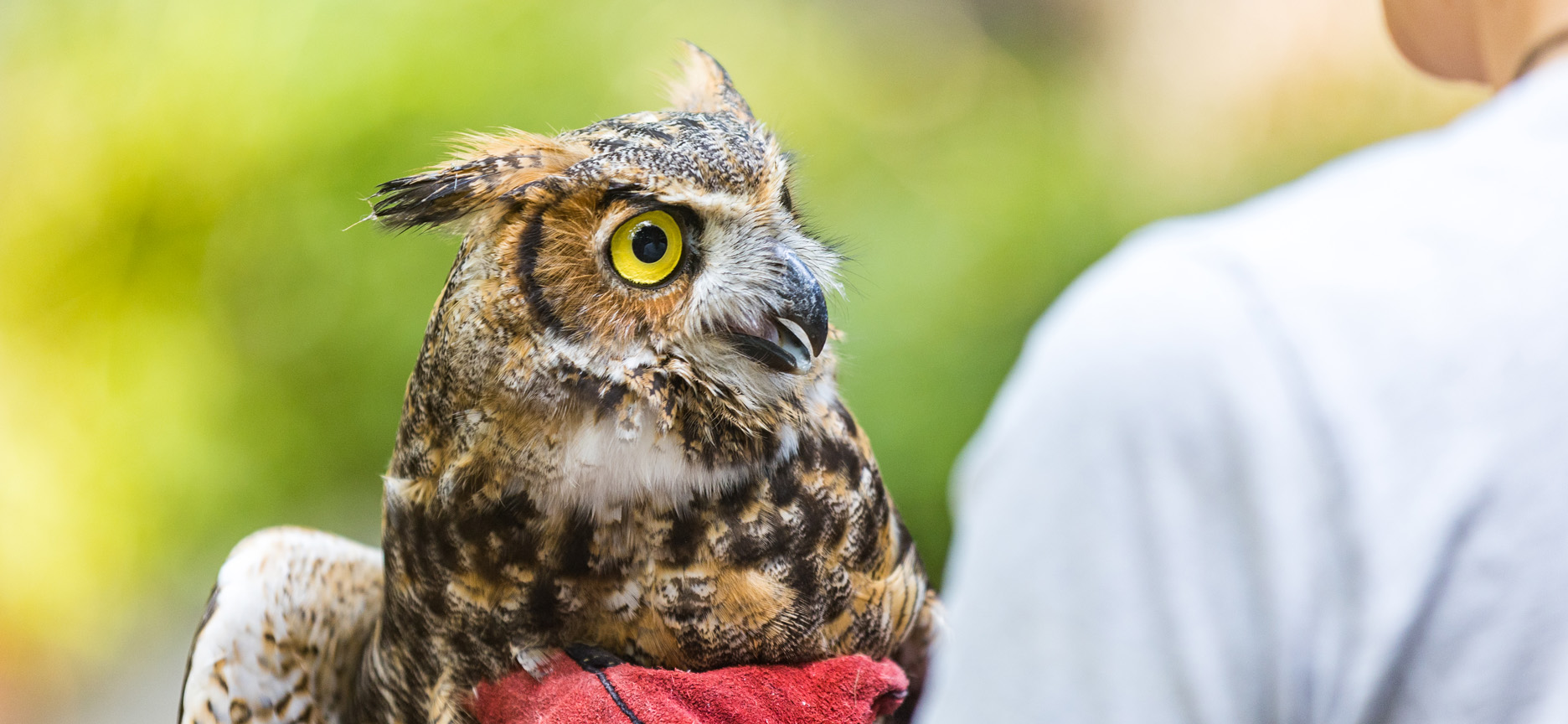Comprehensive Solutions for Wildlife Removal Burlington: Safeguarding Your Home
Comprehensive Solutions for Wildlife Removal Burlington: Safeguarding Your Home
Blog Article
Typical Difficulties and Solutions in Urban Wildlife Removal Initiatives
Urban environments existing unique difficulties for wild animals monitoring specialists entrusted with handling or eliminating wild animals populations. These obstacles typically converge with ethical factors to consider, legal structures, and the safety and security of both people and animals. Public resistance and mistaken beliefs additionally complicate these initiatives, demanding ingenious, non-lethal remedies and durable community outreach. Recognizing the complexities involved in metropolitan wildlife removal is essential for creating strategies that balance human safety with wild animals welfare. What approaches have confirmed most effective, and how can neighborhoods be much better engaged to support these efforts? This discourse seeks to reveal the complex balance needed for successful city wild animals management.
Ethical Wild Animals Administration
Dealing with the intricacies of moral wild animals administration requires an equilibrium between human passions and the preservation of wild animals environments. In urban settings, this equilibrium becomes significantly tough as human development encroaches on wildlife habitats, resulting in constant human-animal communications. Moral wild animals monitoring in these atmospheres needs strategies that focus on gentle therapy of animals while alleviating potential disputes.
One of the core principles in moral wild animals management is the prevention of injury. This entails utilizing non-lethal methods for wild animals elimination, such as exclusion strategies that protect against animals from getting in human homes, or using deterrents that lead them far from urban locations. Wildlife experts are entrusted with employing approaches that decrease anxiety and injury to the animals, guaranteeing their welfare is considered alongside human security.
Moreover, honest administration needs educated decision-making based upon scientific research study and environmental understanding. It is vital to examine the ecological duties of metropolitan wild animals and exactly how their elimination could impact regional biodiversity. Professionals must additionally engage in public education, promoting a wider recognition of coexistence approaches and highlighting the value of protecting natural environments. Eventually, efficient honest wild animals management involves cooperation between guardians, policymakers, and the public to sustain city environments.
Navigating Lawful Constraints
Browsing the legal landscape of urban wildlife removal provides an intricate layer to the already difficult job of honest wildlife management. Lawful constraints are essential in making sure that wild animals is dealt with humanely and ecological communities are preserved. These laws differ dramatically across areas, requiring thorough understanding and compliance from those associated with wildlife management. Laws commonly define allowable techniques of removal, protected types, and licensure requirements, therefore shaping the techniques employed by specialists.
One major obstacle is the consistent development of these laws, typically driven by ecological modifications and social mindsets in the direction of wild animals preservation. Thus, professionals have to continue to be informed regarding existing legal criteria and forthcoming legal modifications. Non-compliance can cause considerable penalties, lawful implications, and reputational damage.
Building connections with wild animals agencies and legal professionals can supply valuable understandings and guidance. Hence, understanding and adhering to legal structures is not merely a step-by-step necessity however a basic component of accountable and lasting metropolitan wildlife administration.

Safety in Elimination Practices
Making certain safety in wild animals elimination methods is critical to protecting both human and animal welfare. A primary issue in wildlife elimination is the possibility for injury or condition transmission to human beings, necessitating the usage of individual safety equipment (PPE) such as gloves, goggles, and masks.
Safe removal practices also include making use of gentle traps developed to protect against injury. These catches should be frequently kept track of to ensure that animals are not left in distress. Furthermore, it is essential to stick to guidelines that determine the ideal handling, transportation, and launch of recorded wildlife, making certain that the pets are next returned to appropriate environments where they can prosper without presenting further dangers to urban atmospheres.
Furthermore, education and training for those included in wildlife elimination are crucial. This makes certain that all events know the current safety and security methods and methods, thus decreasing the probability of mishaps and advertising an unified conjunction between metropolitan occupants and wild animals.
Ingenious Deterrent Solutions
While safety in wildlife elimination is crucial, stopping encounters with city wildlife via innovative deterrent options can substantially decrease the requirement for such treatments. Urban atmospheres, with their abundance of food and sanctuary, typically bring in wild animals like squirrels, raccoons, and pigeons, causing possible problems. Innovations in innovation and layout have paved the means for creative and efficient deterrent techniques that reduce wild animals presence without injury.
One such remedy is making use of ultrasonic tools, which give off high-frequency sounds faint to humans however unpleasant for numerous wildlife varieties, driving them away from particular locations. In addition, motion-activated sprinklers can deter pets by startling them with sudden bursts of water, efficiently dissuading their return. These gadgets are especially beneficial in shielding yards and green spaces from foraging animals.

In addition, the assimilation of wise lights systems that readjust their brightness and shade can interfere with the nocturnal more tips here tasks of certain wild animals, minimizing their comfort in city settings. Physical barriers, such as bird spikes and nettings, continue to serve as functional deterrents, protecting against animals from nesting or roosting in unfavorable places. Stressing humane and environmentally friendly strategies, these advancements hold guarantee for sustainable metropolitan wildlife administration.
Community Education And Learning Campaigns
Comprehending the value of area education and learning campaigns is important in attending to city wild animals difficulties properly. Such efforts play a significant duty in promoting coexistence in between human beings and wild animals in metropolitan setups by elevating awareness and advertising liable actions. Enlightening residents about local wild animals types, their environments, and habits can decrease misconceptions and fear, bring about even more find informed choices pertaining to wild animals monitoring.
Area education initiatives often include workshops, seminars, and outreach programs created to involve residents of any ages. These efforts can concentrate on sensible recommendations, such as protecting waste bins, installing bird-friendly frameworks, and avoiding feeding wild animals, which aids prevent drawing in pets right into metropolitan locations. By distributing knowledge concerning the ecological roles of wild animals, neighborhoods can move point of views from viewing animals as nuisances to identifying their value within city ecosystems.
Residents that understand the significance of wild animals preservation are a lot more likely to support gentle elimination techniques and environment security actions - wildlife rescue burlington. Effective neighborhood education needs partnership between neighborhood authorities, wild animals specialists, and area leaders to establish customized programs that address details city wildlife problems.
Final Thought
Urban wild animals removal needs a multifaceted technique, attending to ethical monitoring, legal compliance, and safety in removal practices. Successful city wild animals management hinges on collaboration amongst authorities, specialists, and locals, ensuring strategies that guard human security while respecting wildlife welfare.
Urban environments existing distinct difficulties for wildlife administration professionals entrusted with taking care of or removing wild animals populaces. Understanding the intricacies involved in urban wildlife elimination is vital for creating techniques that stabilize human safety and security with wild animals welfare.Navigating the legal landscape of city wildlife elimination offers a complex layer to the currently difficult job of ethical wild animals monitoring.While security in wild animals elimination is crucial, avoiding encounters with metropolitan wild animals with cutting-edge deterrent options can significantly minimize the requirement for such interventions. Successful urban wild animals monitoring pivots on cooperation amongst authorities, homeowners, and specialists, making sure techniques that secure human safety and security while respecting wild animals well-being.
Report this page